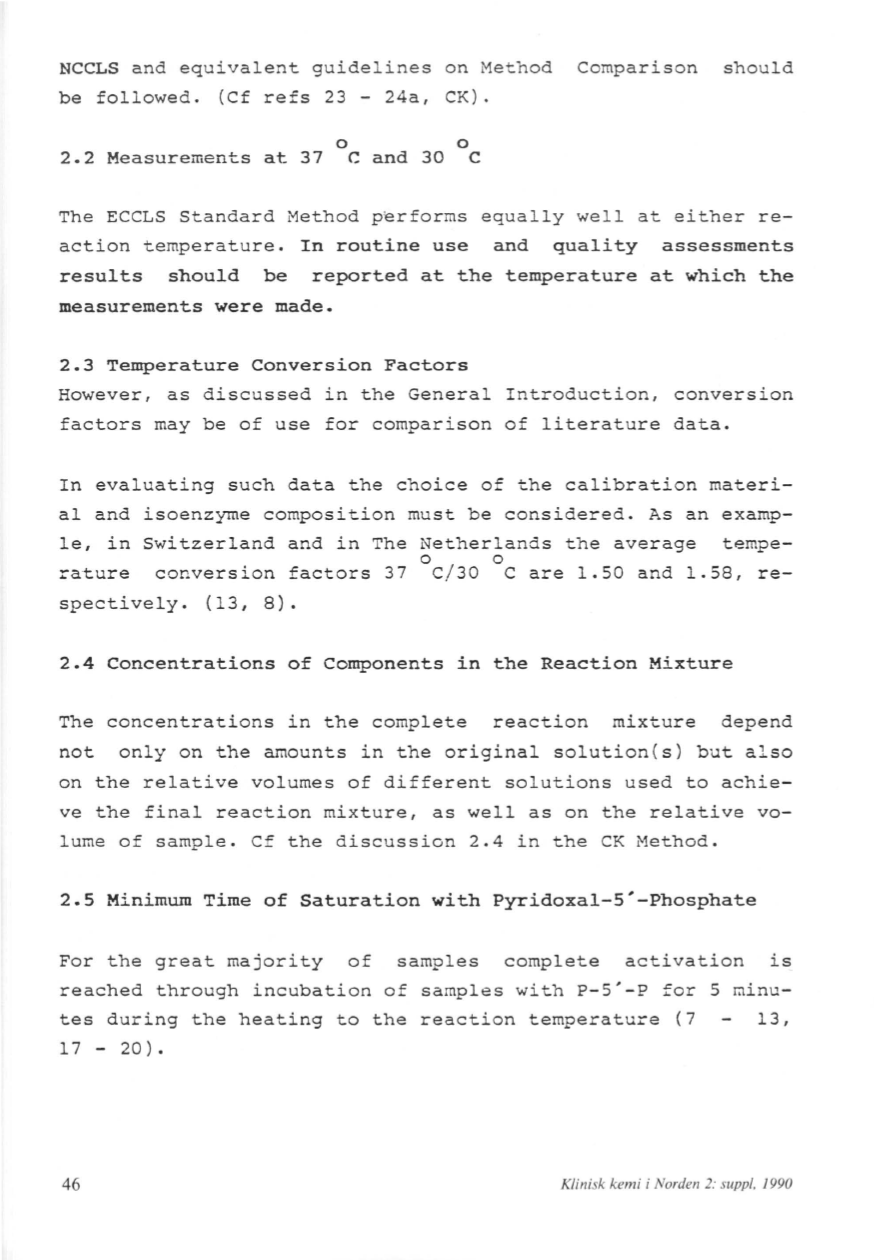
NCCLS and equivalent gu i deli nes on Me thod Comparison shou ld
be followed. (Cf refs 23- 24a, CK).
o
o
2.2 Measurements at 37 C and 30 C
The ECCLS standard Method performs equally well at either re–
action temperature. In routine use and quality assessments
results should be reported at the temperature at which the
measurements were made.
2.3 Temperature Conversion Factors
However, as discussed in the General Introduction, conversion
factors may be of use for compar i son of literature data.
In evaluating such data the ch oice of the calibration materi–
al and isoenzyme composition mu st be considered. As an examp–
le, in Switzerland and in The Netherlands t h e average tempe-
o
o
rature conversion factors 37 C/ 30 C are 1.50 and 1.58, re-
spectively. (13, 8).
2.4 Concentrations of Components in the Reaction Mixture
The concentrations in the complete reaction mixture depend
not only on the amounts in the original solution(s) but also
on the relative volumes of different solutions used to achie–
ve the final reaction mixture, as well as on t h e relative vo–
lume of sample. Cf the discu ssion 2.4 in the CK Method.
2.5 Minimum Time of Saturation with Pyridoxal-5#-Phosphate
For the great majority of samples complete activation is
reached through incubation of samples with P-5'-p for
5
minu–
tes during the heating to the reaction temperature (7
13,
l 7 -
20).
46
Klinisk kemi
i
Norden 2: supp/, 1990


